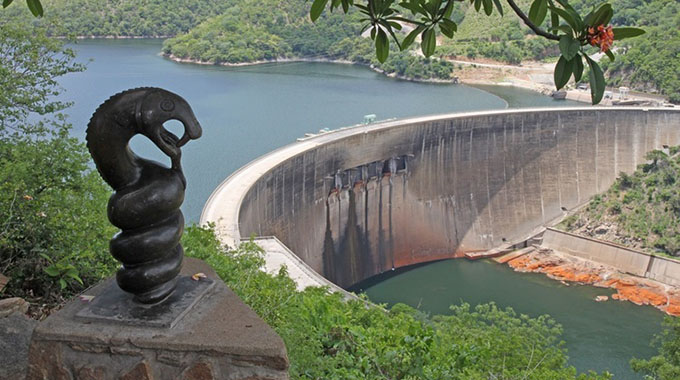Clean energy key to economic development as power prices soar

Jeffrey Gogo
Thousands of Zimbabweans will now pay through the nose for electricity – and yet still not escape the climate change reality that has brought Kariba down to its knees.
Since August, electricity prices have gone up by over 1 000 percent for the typical household to ZW$162,16 cents per kilowatt hour (kWh) – the idea being that a rise in prices will result in a corresponding increase in power supply.
A tariff hike of this margin means that if you were spending $30 on electricity each month in July, now you will spend up to $300 per month for the same amount of power.
The increase dwarfs both increases in annual inflation and wages several fold.
Power utility Zesa Holdings argues that the rise reflected increased costs from power imports, coal supply and general maintenance.
Before this, the firm, which holds the sole licence for distributing electricity in the country, claimed it was selling power at a loss.
But there was no talk about whether the extra income, or a part of it, will be ring-fenced towards improving power supply from clean energy sources or building a related electric power plant.
The narrative focussed on Zesa’s presumptuous request for a tariff the equivalent of US9, 86c per kWh that will be payable only in local currency.
Essentially, the State-run power utility pegged its tariffs to the US dollar, contrary to Finance Minister Mthuli Ncube’s specific recommendation not to tie the price of goods and services to the same.
The effect of such pricing models is that they not only contradict Government policy, but also fuel speculation and, inevitably, inflation — two green-eyed monsters combining to make life difficult for countless families.
For years, questions have lingered over the sustainability of pricing of energy, particularly climate changing fossil-fuel based energies. Zesa, through its electricity and distribution unit ZETDC, buys power from different sources at different prices.
The final selling price of electricity from Zesa should be a blended price. But that seems to not always be the case.
Those opposed to the socialist-Marxist principles on state subsidies in the power sector propose what they like to call market-based pricing, in which electricity tariffs are determined by the interaction between supply and demand.
Often this premise is faulty, in so far as it neglects the poor, who might not afford power whose price is set by parties motivated by profit to the extent of benchmarking prices against regional peers, forgetting Zimbabwe is a unique economic case. Regional economies are more stable.
The dual challenges of economic development and transition to a low-carbon energy future make clean energy access the quintessential challenge of the 21st century.
Access to affordable energy is particularly important to meet the needs of those at the base of the economic and social pyramid.
Based on the complexity of energy access, bold actions are required to eradicate energy poverty (UN Sustainable Development Goal 7) in order to unlock the potential for economic empowerment by 2030.
The current Zesa model does not hold a lot of promise for achieving these goals.
Despite documented managerial incompetencies, unresolved issues of fraud, corruption and inefficiencies, the power utility has made no secret of its intention to continue to transfer the costs of its supposed rebuilding efforts to the consumer.
A more desirable and lasting solution to the current energy crisis would to be boost generation capacity at existing power plants, building new ones and creating incentives that support increased investment within the power sector, particularly targeting renewable energy.
Professor Ncube has revealed one of the major interventions towards boosting electricity generation from renewables — a model most preferred in a world hamstrung by dangerous climate change, the result of centuries of unbridled fossil-fuels dependant global economic development.
He removed excise duty on imports of solar batteries and lithium-ion solar batteries.
The logic is clear. Solar power is not only the most credible quick fix solution to Zimbabwe’s electricity woes, but also sustainable, one that directly responds to the country’s plans of cutting carbon emissions by about a third by 2030.
Moreover, cleaner renewable energies such as hydro-power and solar, have become cheaper compared to electricity generated from fossils like coal and diesel.
The global average for renewable power per kilowatt hour is around US6c.
ZETDC is understood to be paying between US3c and US6c per kilowatt hour for hydro-power generated locally.
It is crucial, therefore, that solar components are affordable to those keen on fully exploiting the energy source, off or on-grid. In the rural areas, the Rural Electrification Agency has over the last few years installed solar mini-grids at 422 institutions including schools and clinics.
Minister Mthuli also recognised that Zesa was run down and that a lot of electricity was going to waste. In the Supplementary Budget released in August, he recommended “Demand management through rapid role out of pre-paid and smart meters and embracing energy saving technology.”
He added: “Speeding up ongoing reforms including restructuring of ZESA to improve efficiency and management of the parastatal; and implementation of planned medium to long term projects.”
God is faithful.











Comments